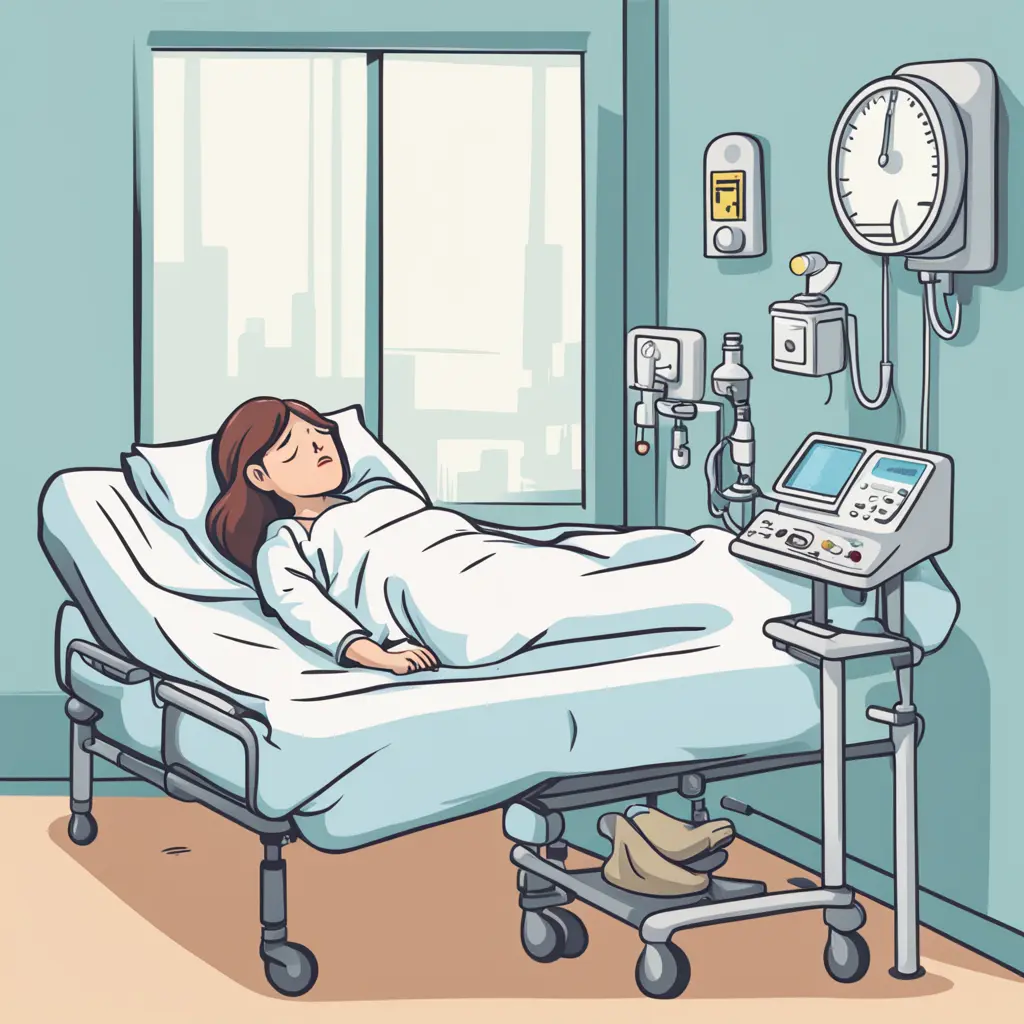Ricin poisoning cases and the Pursuit of Life-Saving Treatments

Ongoing research efforts to find a cure for ricin poisoning involve a multifaceted approach aimed at developing effective treatment modalities and preventive measures for ricin poisoning to which there is no known cure.
Introduction
In the realm of potent toxins, few substances strike as much fear as ricin, a lethal compound derived from the unassuming castor bean plant.
This highly toxic protein has garnered attention not only for its potential as a bioterrorism weapon but also for the lack of a specific antidote to counteract its devastating effects.
Despite ongoing research efforts, the development of a cure for ricin poisoning remains an elusive yet critical objective, one that could save countless lives and fortify our defenses against this insidious threat.
Understanding Ricin Poisoning
Ricin is a potent toxin that exerts its harmful effects on the human body through a targeted attack on cellular machinery.
Once ingested, inhaled, or injected, ricin interferes with protein synthesis by modifying the ribosomes responsible for this vital process.
The toxin’s A-chain disrupts this synthesis, while its B-chain facilitates entry into cells by binding to specific receptors.
4 of Ingestion or Exposure to Ricin
- Inhalation
- Oral Ingestion
- Skin Exposure
- Injection
Inhalation: Ricin can be inhaled through deliberate acts of biological warfare, where it may be concentrated into a mist or powder and released into the air. Inhalation of ricin can lead to respiratory-related symptoms and severe respiratory distress within a short period.
Oral Ingestion: Ingesting ricin, whether through consuming raw castor bean seeds or contaminated food, can result in gastrointestinal distress, including symptoms like nausea, vomiting, abdominal pain, and diarrhea. In severe cases, ingestion of ricin can lead to gastroenteritis, hemorrhage, and organ necrosis.
Skin Exposure: While skin exposure to ricin typically causes inflammation and damage to the skin, it is of little concern in terms of significant absorption unless enhanced with a strong solvent. Dermal absorption of ricin is generally minimal and unlikely to produce toxicity without specific enhancements.
Injection: In rare cases, ricin poisoning can occur through injections of the toxin, although this method of exposure is uncommon and requires deliberate administration of the substance. Understanding how ricin functions in the body and the various routes of exposure is crucial in comprehending the severity of ricin poisoning and the importance of preventive measures and treatment strategies.

Key Takeaways For Cure for Ricin
- Urgent Need for a Ricin Cure There is currently no approved antidote or treatment for the extremely toxic ricin, highlighting the critical need to develop a cure through ongoing research efforts.
- Promising Research Directions
Studies into neutralizing antibodies, small molecule inhibitors, vaccines, and regenerative therapies offer hope for potential breakthroughs in treating ricin poisoning. - Ethical Considerations and Preparedness While pursuing a cure, it’s essential to address ethical issues around development and distribution, ensure safety and access, and prioritize prevention measures like public awareness and decontamination protocols.
Symptoms of RICIN poisoning

1. Sudden fever
2. Cough, shortening of breath, and tightening of the chest
3. Sweating and flushing
4. Gastrointestinal issues, such as abdominal pain, vomiting, and diarrhea
5. Muscle aches, especially in the chest and back
6. Dizziness or confusion
7. Low blood pressure or shock If you experience any of these symptoms after potential ricin exposure, seek immediate medical attention.
Remember, early detection and prompt treatment can make all the difference in a successful recovery.
This double-pronged assault ultimately leads to widespread cell death, wreaking havoc on various organs and systems within the body.
The routes of exposure to ricin are diverse, ranging from accidental ingestion of castor beans or contaminated food to deliberate acts of bioterrorism involving aerosolized ricin particles.
Inhalation is particularly dangerous, as it can rapidly lead to respiratory distress and a cascade of life-threatening complications.
Ingestion, on the other hand, may initially present with gastrointestinal symptoms like nausea, vomiting, and diarrhea before progressing to more severe manifestations.
Current Treatment Approaches

Despite the grave threat posed by ricin, there is currently no specific antidote or approved therapy to combat its effects.
The primary approach to managing ricin poisoning relies on supportive medical care tailored to the individual’s symptoms and route of exposure.
This may involve respiratory support, intravenous fluids, medications to manage complications like seizures and low blood pressure, and decontamination procedures to remove any remaining traces of the toxin from the body.
While these supportive measures are crucial in minimizing the effects of ricin poisoning, they do not directly target the underlying mechanism of the toxin’s action.
As such, the development of specific antidotes and targeted therapies remains a pressing priority in the fight against this deadly substance.
Alternative Treatments for Ricin Poisoning
In addition to ongoing research for a cure for Ricin poisoning, there are a few natural remedies that can help mitigate the effects of the toxin. Activated charcoal can be used to prevent the absorption of Ricin in the body.
Vitamin C, magnesium, and antioxidants like ginger and turmeric can also help support the immune system and reduce inflammation caused by Ricin exposure.
It is important to note that these remedies are not a substitute for medical treatment and should only be used in conjunction with professional medical care.
- Use Epsom salt baths or foot soaks to draw out toxins through the skin.
- Try yoga or meditation to reduce stress and improve blood circulation, which can aid in toxin elimination.
Remember, these natural remedies are not a substitute for medical treatment, so always seek professional medical care if you suspect exposure to ricin.
Natural Remedies to Detoxify the Body After Ricin Exposure

- After experiencing ricin exposure, it is important to help your body detoxify naturally. Here are some natural remedies that can help speed up the detoxification process:
Drink plenty of water and herbal teas to flush out toxins from the system. - Consume high-fiber fruits and vegetables such as apples, pears, broccoli, and Brussels sprouts, which help to eliminate toxins from the digestive system.
- Take Vitamin C supplements to boost the immune system and reduce inflammation in the bodyUse
- Epsom salt baths or foot soaks to draw out toxins through the skin.
- Try yoga or meditation to reduce stress and improve blood circulation, which can aid in toxin elimination.
Remember, these natural remedies are not a substitute for medical treatment, so always seek professional medical care if you suspect exposure to ricin.
Ricin for cancer research
- Immunotoxins: Ricin is combined with antibodies or other targeting molecules to create immunotoxins that specifically bind to cancer cells, delivering the toxic payload.
- Cancer vaccines: Ricin has been investigated as an adjuvant to enhance the immune response in cancer vaccines.
- Targeted therapy: Ricin has been linked to ligands or antibodies that target specific cancer cells, reducing harm to healthy cells.
- Gene therapy: Researchers have explored using ricin to selectively kill cancer cells that have been modified to express a specific gene.
Research and Development: A Glimmer of Hope for the Cure for Ricin

The quest for a cure for ricin poisoning has prompted a flurry of research activity, with scientists and pharmaceutical companies exploring various avenues to neutralize the toxin’s effects.
Recent studies have suggested that antibody cocktails, comprising a combination of antibodies targeting both the A and B chains of ricin, may offer enhanced neutralizing capabilities.
One promising area of investigation involves the development of neutralizing antibodies specifically designed to target ricin and prevent it from exerting its harmful effects on cells.
This approach aims to disrupt the toxin’s entry into cells and its subsequent interference with protein synthesis, potentially mitigating the devastating consequences of ricin exposure.
Additionally, researchers are exploring the potential of small molecule inhibitors and repurposed drugs as potential antidotes.
By targeting specific cellular pathways or mechanisms exploited by ricin, these compounds could offer a novel line of defense against the toxin’s effects.
Vaccine development and passive immunization are also being explored as prophylactic measures against ricin exposure.
Animal studies have demonstrated the efficacy of these approaches, offering hope for enhanced preparedness and protection against potential bioterrorism threats involving ricin.
Prevention and Protection: A Proactive Approach
While the development of a cure remains a top priority, prevention and protection against ricin exposure are equally crucial components of a comprehensive strategy.
Individuals can take proactive steps to minimize their risk by avoiding the ingestion of castor beans or products containing ricin, exercising caution in environments where castor plants are present, and staying informed about potential threats or incidents involving ricin.
In the event of a confirmed or suspected ricin exposure, prompt action is paramount.
This includes immediately leaving the contaminated area, removing and safely disposing of contaminated clothing, thoroughly washing the skin and eyes with copious amounts of water, and seeking immediate medical attention.
Effective decontamination protocols and the availability of protective equipment, such as masks and respirators, can further enhance preparedness against potential ricin exposure scenarios.
Additionally, public awareness campaigns and training initiatives can empower individuals to recognize the signs of ricin poisoning and respond appropriately, potentially saving lives in the process.
Cure for Ricin-Case Studies and Historical Context

Throughout history, ricin has been implicated in various high-profile incidents, highlighting its potential for use as a weapon and the devastating consequences of exposure.
One of the most notable cases involves the assassination of Bulgarian dissident Georgi Markov in 1978, who was killed by a ricin-laced pellet fired from an umbrella in London.
More recently, multiple incidents involving ricin-laced letters have been reported, including those addressed to public figures and government officials, underscoring the ongoing threat posed by this toxin.
Additionally, extremist groups and individuals have been linked to attempted acquisitions and potential use of ricin as a weapon, further emphasizing the need for vigilance and preparedness.
Future Prospects and Ethical Considerations
As research into ricin antidotes and treatments progresses, a number of ethical considerations must be addressed.
Ensuring the safety and efficacy of potential antidotes through rigorous testing is paramount, while also navigating the ethical challenges associated with animal testing and human clinical trials.
Moreover, the equitable distribution and access to any developed antidotes or therapies must be a priority, particularly in the context of potential bioterrorism threats.
Regulatory compliance and adherence to established guidelines are also crucial to ensure patient safety and the responsible development of these life-saving treatments.
Despite these challenges, the future prospects for finding a cure for ricin poisoning remain promising.
With continued investment in research, innovative approaches such as regenerative therapies and gene-based treatments may offer novel solutions to mitigate the effects of ricin exposure and improve patient outcomes.
How to Protect Your Home from Ricin Contamination
Preventing ricin contamination at home is crucial to safeguard you and your family from exposure. Here are some simple steps you can take to protect your home:
1. Do not consume castor beans or castor bean products.
2. Keep castor plants or beans out of reach of children and pets.
3. Wear protective equipment such as gloves and masks while handling castor beans or plants.
4. Thoroughly wash your hands, clothes, and surfaces after handling castor beans or plants.
5. Use airtight containers to store castor beans or products and dispose of them properly.
Remember, prevention is key to avoid the harmful effects of ricin exposure.
Conclusion
The pursuit of a cure for the extremely toxic ricin is an urgent priority that could save many lives.
While no approved treatment currently exists, promising research into antibodies, inhibitors, vaccines, and regenerative therapies offers hope.
However, finding a cure is just one part of a comprehensive strategy against ricin that must also include prevention, protection, preparedness, and addressing ethical considerations around development and distribution.
Through dedicated research efforts and collaboration, the goal of neutralizing the deadly threat of ricin may be achievable. The path is difficult but the potential rewards are immense in safeguarding humanity against this insidious toxin.
Frequently Asked Questions
What is ricin and why is it dangerous
Ricin is a highly toxic protein found in castor beans that inhibits protein synthesis in cells, leading to organ failure and potentially death even in small doses.
Is there a cure for ricin poisoning
Currently, there is no specific antidote or cure for ricin poisoning. Treatment focuses on supportive care to manage symptoms while the body eliminates the toxin.
What are the symptoms of ricin exposure?
Symptoms vary by exposure route but may include difficulty breathing, nausea, vomiting, severe diarrhea, dehydration, low blood pressure, seizures, and organ failure.
What should I do if exposed to ricin?
Immediately leave the contaminated area, remove and seal contaminated clothing, wash with soap and water, rinse eyes if affected, and seek emergency medical attention.
What promising research exists for a ricin cure?
Research includes neutralizing antibodies, small molecule inhibitors like Retro-2, compounds from green tea (eGCG), vaccine development, and passive immunization strategies.
Citations:
https://pmc.ncbi.nlm.nih.gov/articles/PMC10025221/
https://www.healthline.com/health/ricin-poisoning
https://www.cdc.gov/chemical-emergencies/chemical-fact-sheets/ricin.html
https://www.aaas.org/taxonomy/term/10/beans-weapon-discovery-ricin
https://serb.com/insights/why-were-developing-a-ricin-antidote/
Contents
- 1 Ricin poisoning cases and the Pursuit of Life-Saving Treatments
- 1.1 Understanding Ricin Poisoning
- 1.2 Key Takeaways For Cure for Ricin
- 1.3 Symptoms of RICIN poisoning
- 1.4 Current Treatment Approaches
- 1.5 Alternative Treatments for Ricin Poisoning
- 1.6 Natural Remedies to Detoxify the Body After Ricin Exposure
- 1.7 Ricin for cancer research
- 1.8 Research and Development: A Glimmer of Hope for the Cure for Ricin
- 1.9 Prevention and Protection: A Proactive Approach
- 1.10 Cure for Ricin-Case Studies and Historical Context
- 1.11 Future Prospects and Ethical Considerations
- 1.12 How to Protect Your Home from Ricin Contamination
- 1.13 Conclusion
- 1.14 Frequently Asked Questions
- 1.15 What is ricin and why is it dangerous
- 1.16 Is there a cure for ricin poisoning
- 1.17 What are the symptoms of ricin exposure?
- 1.18 What should I do if exposed to ricin?
- 1.19 What promising research exists for a ricin cure?
- 1.20 Citations:
